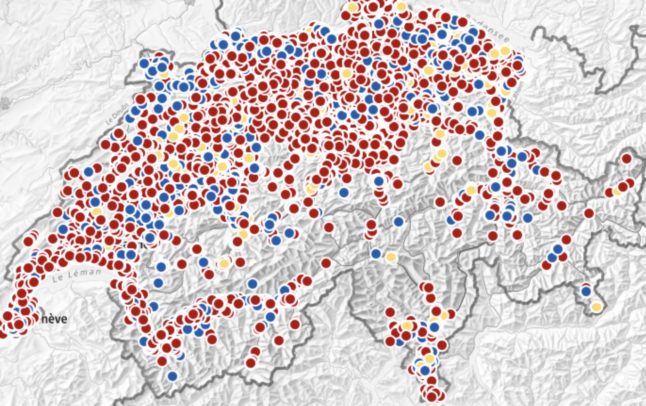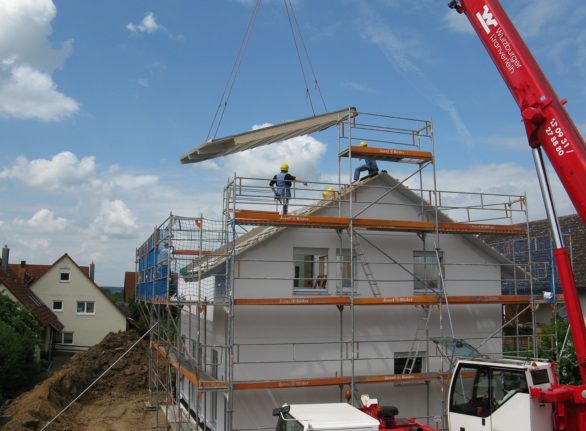Simply put, Minergie is an official label for sustainable construction — that is, buildings that use less energy than conventional ones.
This means not only lower energy consumption, but also cleaner indoor air and automatic temperature control.
Born in 1998
While it may sound like a very new concept, it is not.
In fact, it dates…to the previous century, to 1998 to be precise.
That is when a group of people in Switzerland, concerned with protecting the environment from greenhouse emissions, launched the concept of energy-efficient living spaces.
The idea, and part of the financing for the scheme, was picked up by the government, at both the federal and cantonal level.
To date, more than 50,000 buildings in Switzerland — both new and renovated — carry the Swiss quality Minergie label.
This government map shows where they are located:

What exactly does this mean?
Minergie houses are generally designed with thermal insulation and an automatic ventilation system for good air circulation.
They don’t use gas or oil, saving both energy and cost of it by relying on heat pumps and solar energy instead.
As a result, Minergie apartments stay comfortably warm in the winter and comfortably cool in the summer — which is a definite plus as air conditioners are notoriously difficult to install in Switzerland.
READ ALSO: Why getting permission for air conditioners is so hard in Switzerland
Another difference between a conventional and a Minergie home is that in the latter you don’t have to open the windows to ventilate, as fresh air circulates automatically.
This doesn’t mean that you can’t open the windows if you want to; just that you needn’t do it to let fresh air in.
What do people living in Minergie housing think?
“Our Minergie house is great! It has way better insulation than an average house which makes it pleasantly cool in the summer and low energy to heat up in winter,” one Reddit user said.
“There are thermostats in each room and the ventilation system also works great.”
All this sounds great, and many tenants and homeowners do swear by the efficacy of the Minergie system.
But some report minuses as well.
For instance, one complaint posted on social media, relates to the fully automated system. “We couldn’t regulate anything in our rental apartment, because it was all done centrally,” one tenant said.
In a forum on this subject on Reddit, one tenant mentioned that their Minergie apartment “had a really bad smell, like something decomposed …and it always feels ‘windy inside” — both complaints suggesting that perhaps the ventilation system was faulty.
Someone else said that “our ventilation system causes a pressure difference from indoors to the place in front of the flats, so it’s hard to open the doors if the ventilation is on high.”
As another tenant pointed out, the Minergie system as a whole is very good, but it doesn’t rule out problems in some dwellings.



 Please whitelist us to continue reading.
Please whitelist us to continue reading.
Member comments